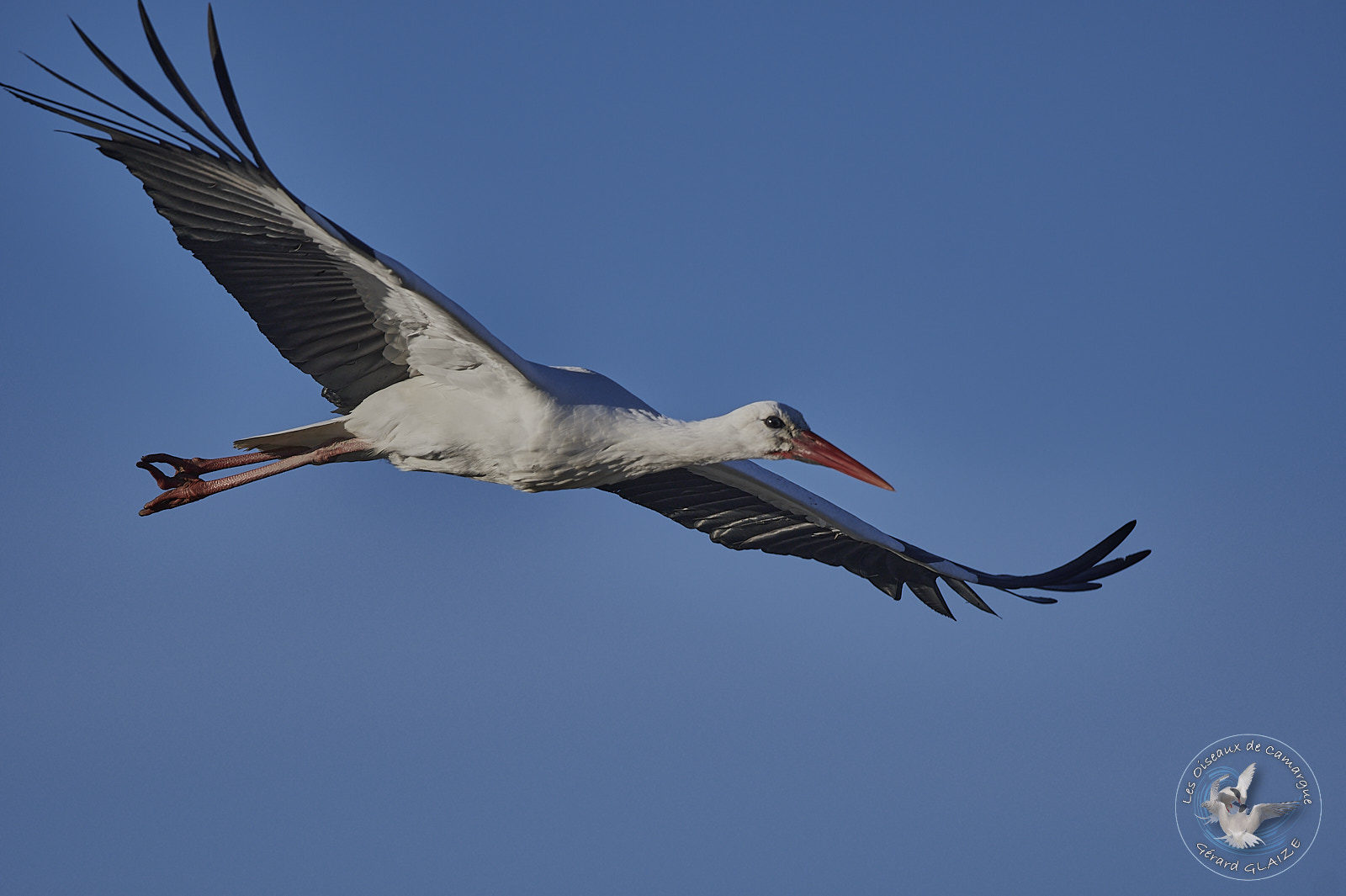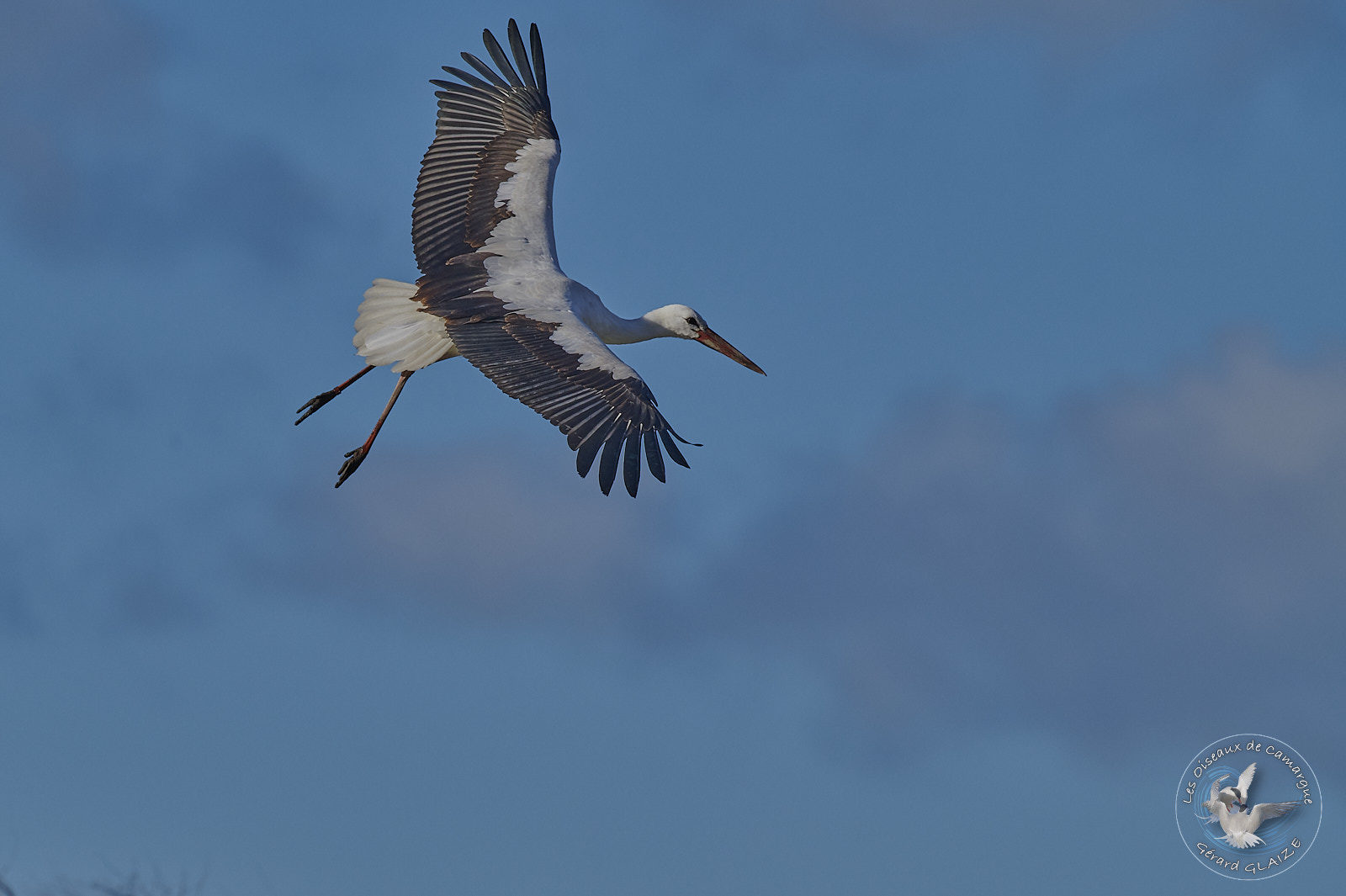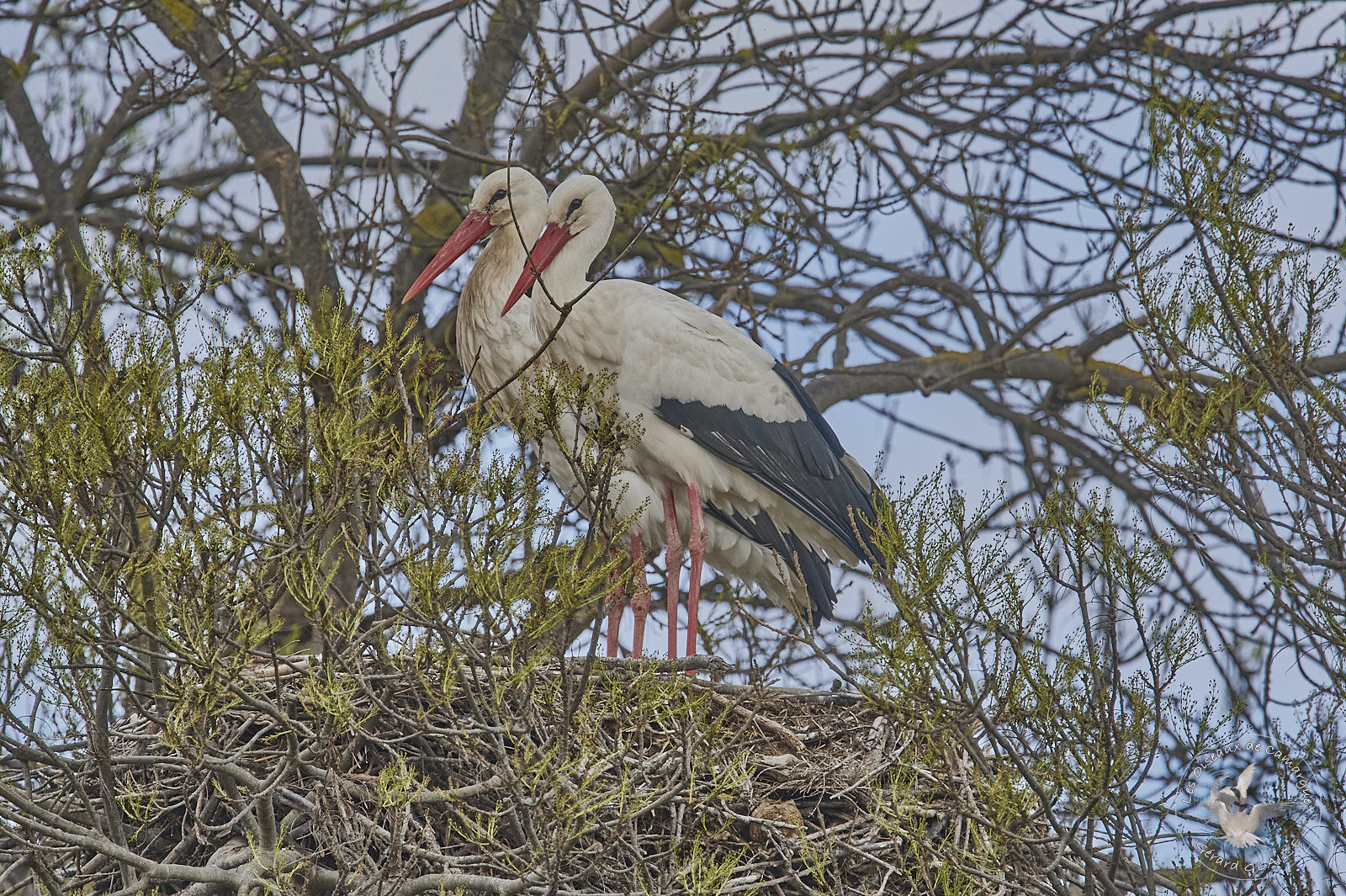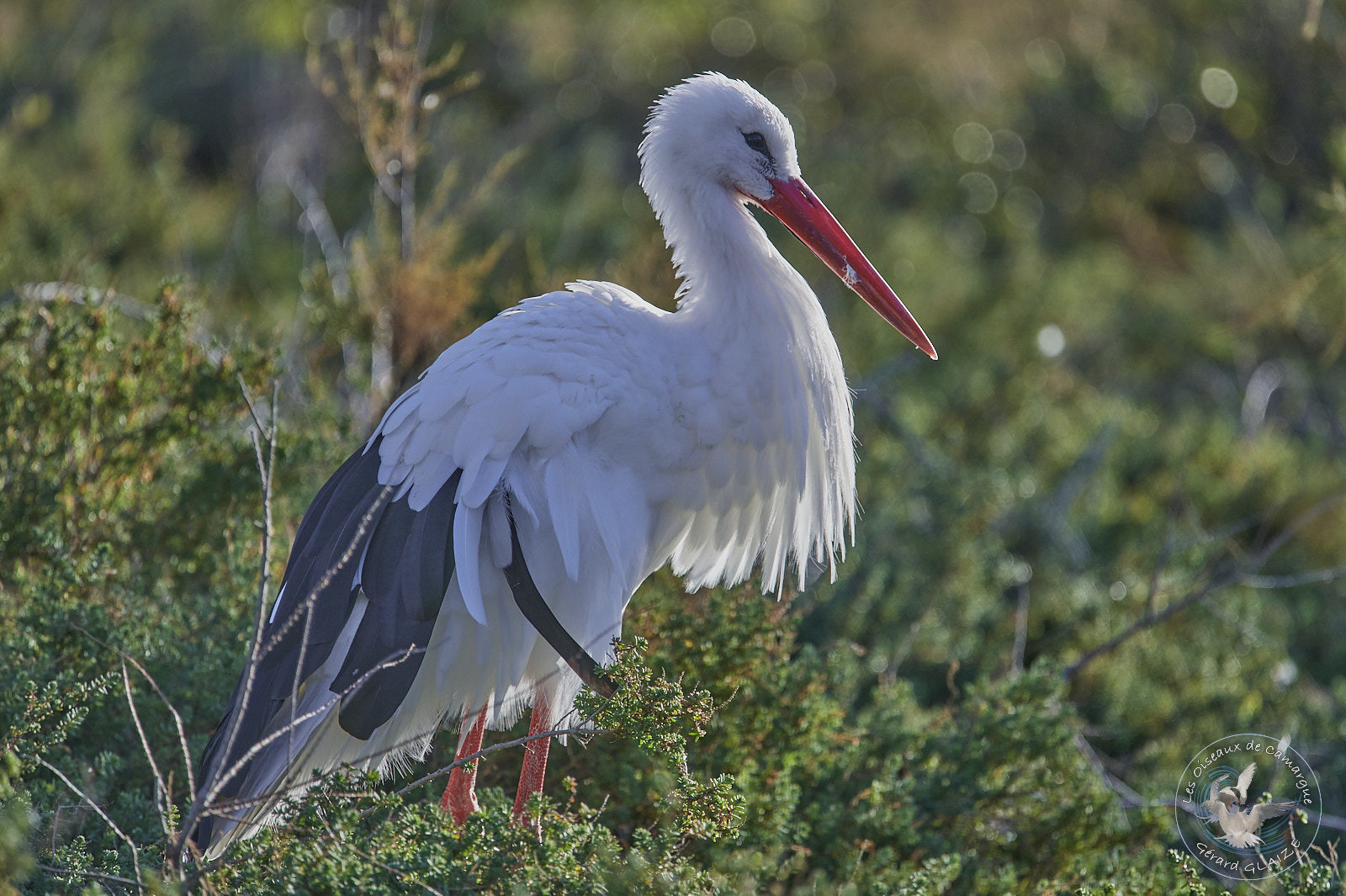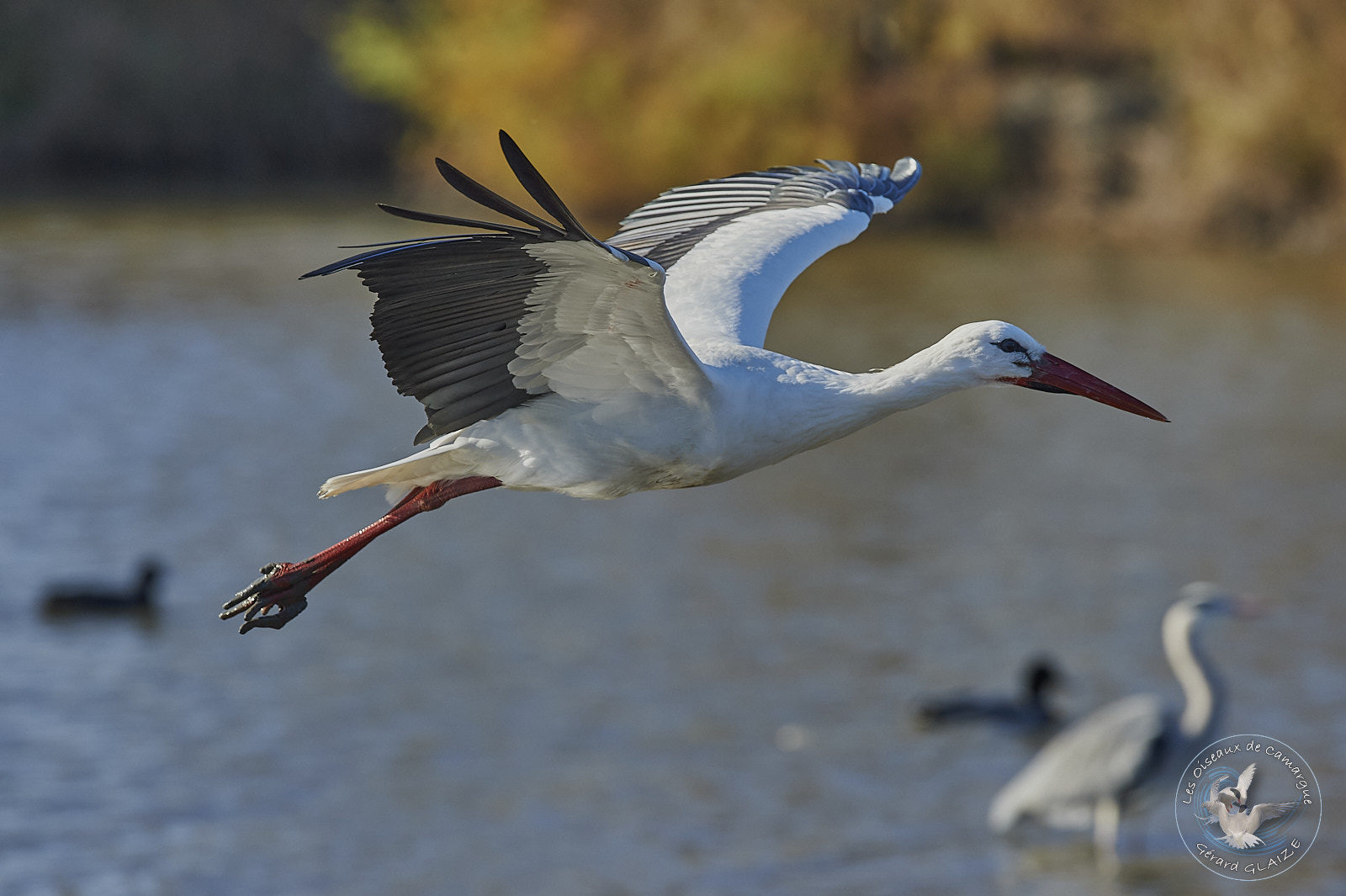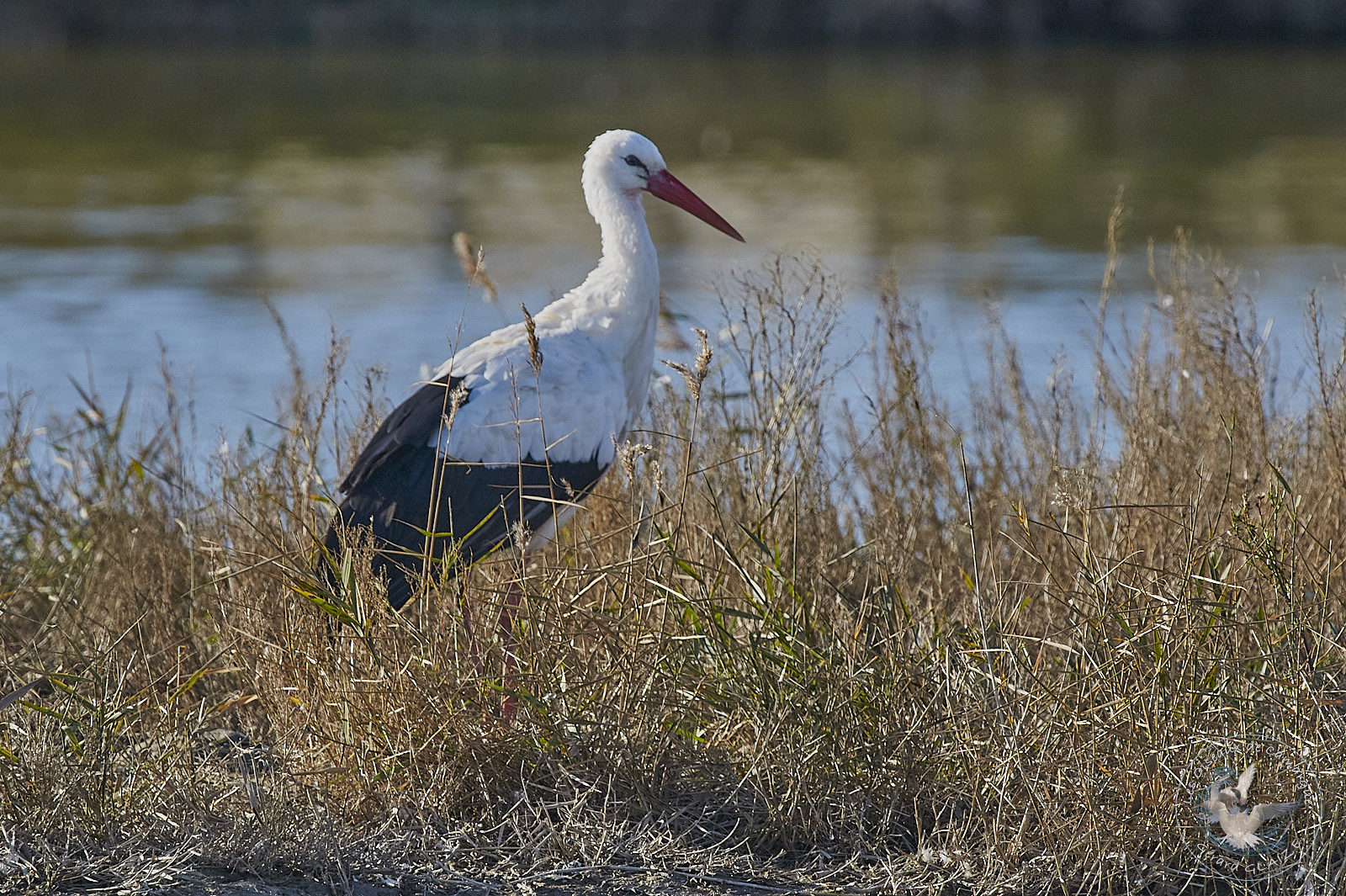White Stork
White Stork is a large species of wading bird in the Ciconiidae family. The plumage is entirely pure white, except for the primaries and secondaries which are black. The pigment responsible for this coloration is melanin. Breast feathers are long and shaggy, and form a ruff used in courtship. Adults have long red legs and a long, straight red beak. In juveniles, the tip of the beak is blackish.
White Stork is a great migrant. It winters in tropical areas from sub-Saharan Africa to South Africa or the Indian subcontinent. During its migration between Europe and Africa, it avoids crossing the Mediterranean Sea by making a detour to the east by the east or to the west by the Strait of Gibraltar because the ascending currents of the air it needs do not form above water.
White Stork
Scientific name : Ciconia ciconia
Family : Ciconiidae
Length: 102 cm – Wingspan: from 155 cm to 215 cm
Weight : from 3.000 gr to 3.500 gr
IUCN Conservation Status: LC
Flight
As in other storks, the wings are long and broad, adapted to ascending flight. In flapping flight, the wing movements are slow and regular. Like most members of its family, the stork flies with its neck stretched forward, and its long legs protrude far beyond its short tail.
Regime – Diet
White Stork has a carnivorous diet. It feeds mainly on invertebrates. In particular beetles and orthoptera, molluscs, slugs, snails, earthworms, micromammals and now red swamp crayfish. This Louisiana crayfish is rapidly colonizing our country. It is a real scourge for aquatic vegetation and populations of fish and amphibians. But it is an exceptional reservoir of food for herons and storks! It finds most of its food on the ground, among low vegetation, and in shallow water.
Nesting
The species is monogamous but the partners do not pair for life. They build a large nest of branches. When the nest is finished it measures between 1 and 2 m in height and 80 to 150 cm in diameter. This is reused every year, so it can reach a huge volume. The species often nests solitary but there are sometimes colonies of about thirty birds. Each year the female generally lays four eggs, which both parents will incubate for 33 or 34 days. The young fledge 58 to 64 days after hatching. The parents continue to feed them for another 7 to 20 days.
Protection
White Stork is considered a species of “Least Concern” by the International Union for Conservation of Nature.
This remarkable bird has given rise to many legends across its range. The best known is that of babies brought by storks.
Cry
White Stork is usually rather silent. The main sound emitted by the adult White Stork is a loud bill-clattering. It is said that she taps, crackles or glotores.
Useful Links
Other Links
- You can see the article from my site “Birds of Camargue” for more information on the Camargue and the Birds.


